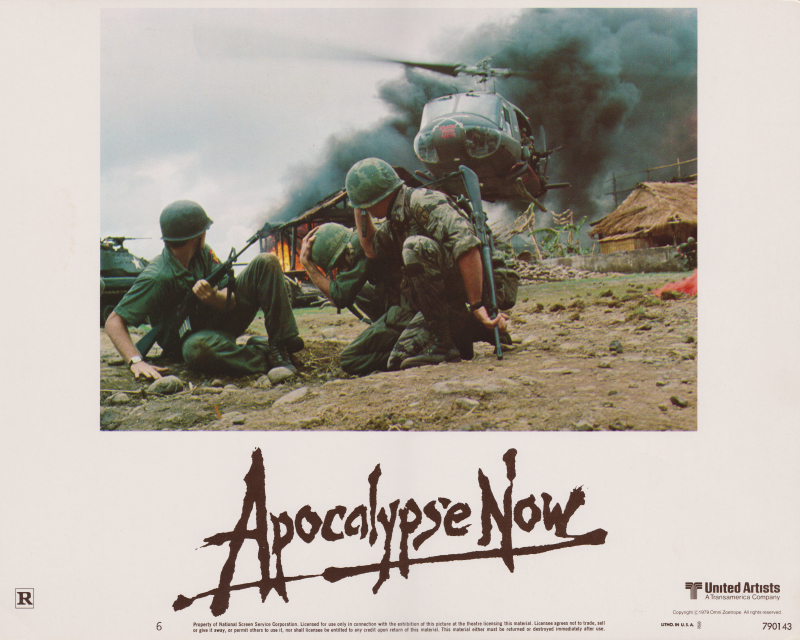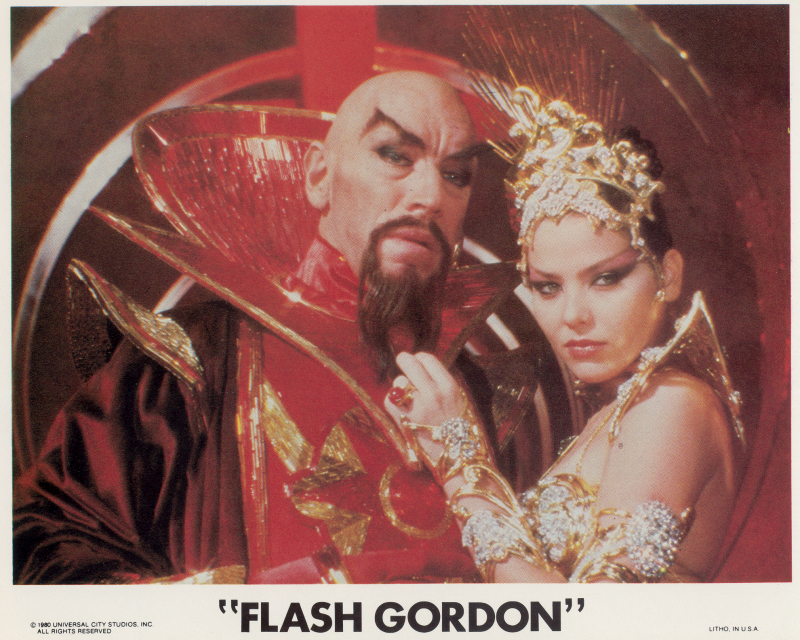What would you like to know?
Click on the questions below to reveal a useful answer for each one of them. As additional questions are received, this page will be updated in due course to cover those too. Do you have a question not answered here? Ask away!
Alternatively, feel free to also put forward any questions over on our Twitter account: @LobbyCardTweets
For Those Who Came in Late...
Put simply, a "lobby card" is a piece of ephemera (printed paper or card material). They were produced by movie studios (or an assigned marketing company) to help preview and promote the release of a particular film in cinemas. In some less common cases, such cards were also printed to advertise re-releases of classic films in movie theatres - or even selected video rental releases on VHS and (to an even lesser extent) DVDs.
The earliest known lobby cards date as far back as circa 1910 and continued to be printed for several decades, until the late 1980's in the USA. After that, cards were still produced in other territories including the UK, France and German - but are now effectively obsolete. This is due to the rise of digital marketing methods (digital display boards outside and inside of cinemas, CD-Rom press kits and so on).
Lobby cards have become desirable, collectable pieces of memorabilia for many years - a trend which has been on the rise since their production ceased some years ago.
Many did, but not all..
The existence of lobby cards for a particular film release tends to depend on a few factors - the primary two being 1) the scale of the film in question and 2) the plight of the studio producing and backing the film at the time.
For example... there were notably no lobby cards printed in the USA for Michael Mann's "Manhunter" (1986). This is believed to be because of financial difficulties being experienced by the production studio at the time (De Laurentiis Entertainment Group or "DEG" for short). Marketing and distribution budgets were cut back - so in the case of Manhunter, a "One Sheet" poster was printed to promote the film's (rather limited..) release in U.S. cinemas - whereas there were no lobby cards (a particular shame in the case of this film, what with it having so many strong visuals throughout, courtesy of the the creative partnership of visionary director Mann and director of photography Dante Spinotti).
Fortunately this kind of scenario proved to be a rarity - and the majority of films released between 1930 and 1985 did have lobby cards produced.
10" x 8" and 14" x 11"
The vast majority of cinema cards featured here on the Lobby Cards Gallery measure 10" x 8" (Ten Inches x Eight Inches).
Selected larger format cards measure 14" x 11" (Fourteen Inches x Eleven Inches).


The exception to these measurements are international lobby cards (France, Germany, Spain, Mexico, Japan etc.). These usually have different dimensions and also more frequently consist of a mixture of landscape and portrait formatted images.
Gone metric..?
- 10" x 8" = 25.4 cm x 20.32 cm
- 14" x 11" = 35.56 cm x 27.94 cm
- German lobby cards = 21 cm x 29.7 cm
Unfortunately not.
For a few reasons, physical lobby cards and movie press kits became surplus to requirements. This was mainly down to the demise of the National Screen Service (circa. 2000) and the parallel rise in the use of digital marketing materials (initially CD-ROM based press kits, followed by online downloadable resources).
A final nail in the lobby cards "coffin" will also have been the emergence of electronic, digital display boards on-site a cinema complexes. Thanks to the rapid rise of the Internet, cinemagoers these days typically have already seen several teaser and preview images, long before the release of the film in cinema theatres. Another reason why on-site "preview" images are sadly no longer required.
When lobby cards stopped being produced.
In the USA, most lobby cards ceased being printed as long ago as 1989. Their existence continued into the 1990's here in the UK and survived well into the new millennium in selected countries such as France, German and Japan.
As of 2021, newly printed lobby cards of any kind are an extremely rare occurrence, reserved only for special one-off screenings - and occasionally also included as bonus items in "Collector Editions" of film releases. These are not true lobby cards however, rather authorised "film cards".
Sadly not.
Unfortunately movie studios and their associated marketing teams stopped producing lobby cards for new releases in the USA as far back as the late 1980s.
Since then there have been some high profile exceptions (some of the initial Harry Potter films *did* have lobby cards produced, for example - along with the likes of Michael Mann's "The Last of the Mohicans" (1992) and "Heat" (1996). In more recent times hardly any such materials are printed at all, the only exceptions usually being as a clever "retro" marketing gimmick (e.g. for Tarantino's cult movie "Death Proof" (2007)) - or for other promotional reasons (e.g. the Netflix backed theatrical release "Maestro" (2023)).
That depends (on a number of factors).
The actual "value" of a particular set of lobby cards or an individual card can vary quite dramatically, based on a few variable factors and considerations. Here are a few key ones to bear in mind when trying to research and put a value on Lobby or Front of House cards:
- Provenance: Are the cards authentic, vintage memorabilia?
- Unauthorised reproduction cards are practically worthless, compared to the vintage originals from which they were reprinted!
- Official cards from later re-releases of films in cinemas DO have a value, but this is typically less than coveted "First Release" cards. Likewise, cards produced for later video rental releases also command a lower asking price.
- Present and correct: If you have a batch of cards, do they represent a complete set?
- Remember that not all "sets" comprised of 8 cards - some had more, some less..
- Subject matter: What film does the card depict scenes from?
- For example (and as one might expect..) "Dirty Harry" cards are worth several times more than ones for "Police Academy"!
- Be careful though! Some films which performed poorly at the Box Office may well have since acquired so-called "Cult Status" over the years. As such marketing materials relating to such titles may well be in shorter supply and greater demand - which can result in higher valuations (and asking prices)
- Star power: What movie star(s) are featured on the card(s)? Likewise, who wrote or directed the movie?
- Condition: Are the cards damaged in any way? If so, how bad are the blemishes?
- What country do the cards originate from?
- As a general rule, cards from the USA and UK typically command a higher asking price vs. cards from France, Germany, Spain, Japan or Mexico...
Valuation services.
Please note: At the present time I do not offer a formal valuation service (sorry!). However, if you have any general questions about the value of any lobby cards you either own or are considering buying (elsewhere) please do feel free to get in touch for some honest, informed guidance.
Not at the moment.
Sorry, but at the present time (circa. 2021) the vast majority of cinema lobby and front of house cards featured on this Website are not available to buy.
There are a few exceptions (for example where duplicate cards or complete sets are held by the Gallery). Such sets may well be available to purchase - please refer carefully to the details on the respective film release pages.
Planning ahead.
There are plans for a fully-featured online shopping facility on this Website to be introduced in the future. If you would like to be kept updated about when this service is launched, please consider "Liking" the Lobby Cards Gallery Page on Facebook.
Alternatively you can also subscribe for occasional email updates.
Ebay.
Obvious as it may sound, the mighty Ebay is an eternal treasure trove when it comes to finding rare pieces of movie memorabilia! Fortunately, lobby and front of house cards are no exception - and you'll even find dedicated categories for UK, USA and "International" lobby cards on their extensive databases.
Take a look!
Good question.
With the rise of reproduction and "reprint" lobby cards (some of which may actually be authorised "official" marketing materials), it can be a minefield when trying to differentiate "real" from "fake" lobby cards.
This is a complex, important topic which will be covered in more detail in the future (on a dedicated area of this Website). In the meantime, if you are new to collecting here are some useful tips:
- When buying online (e.g. Ebay) always (ALWAYS!) get in touch with the Seller and ask them if the card or cards you are interested in are "vintage originals"
- Always read a Seller's description carefully (and to the end) - as some unscrupulous people sometimes tag on "Reproductions." (or similar wording - right at the bottom of a listing!)
- Other keywords to look out for on listings would be "repro", "reprint", "non-vintage" and similar
- Collectors of Star Wars and James Bond memorabilia are advised to be particularly cautious, as these popular series of films are awash with shoddy, fake copies of vintage marketing materials. Buyer beware!
- Sellers offering multiple sets of the same cards (all in "Mint" condition) should also be treated with some levels of apprehension and general caution - particularly if there are seen to magically then "restock" listed sets, over time..
- Finally.. if your gut instinct is that cards you are considering might be unauthorised reproductions, you're probably correct...
No!
Each and every single lobby or front of house card featured on the Lobby Cards Gallery Website is guaranteed to be 100% vintage movie memorabilia.
Over the years like many fellow collectors I have been occasionally "duped" by a rogue seller or dealer and have inadvertently acquired a small selection of reproduction cards as a result.
With these, I have either long since discarded them (in the paper recycling bin, naturally...) OR I've held onto them and archived accordingly. I have no interest in sharing any such "fake" cards here however (fortunately I don't have many...) - the one exception being on any "How to spot a fake lobby card" style content, where naturally they can come in quite useful as real world examples.
The core "Genres" content (where the Galleries themselves are located) are guaranteed to not feature any reproduction cards.
Front of House = UK. Lobby = USA.
Although lobby cards were also printed in other countries, the vast majority you will see featured here on the Galleries will originate from either the USA, or the UK.
In the case of the latter, the correct terminology for such printed materials is actually "Front of House" cards - as this is what they were referred to as here in the United Kingdom (and still are by many collectors to this day).
"Lobby cards" on the other hand typically refers to cards printed over in the United States of America (be it 10" x 8" or 14" x 11" sized images).
The most likely simple explanation for the difference in naming conventions is simply down to the fact that the entrance area of cinema buildings in the UK would be referred to as being the "front of house", whereas over in America the same area would be known more commonly as the "lobby"...
Any differences between them?
Despite the difference in name, "lobby" and "front of house" cards are actually very similar - the only typical difference being the UK "FOH" cards were printed on thinner paper/card stock (compared to their USA counterparts). The choice of actual scenes depicted usually also differs when comparing UK and USA cards. As a result, die-hard collectors and fans of particular film releases often like to acquire both USA and UK sets (wherever possible, that is - in some cases cards were not printed in both countries, depending on the size of the cinema release, marketing budgets and so on).
Yes, yes there is!
If you would like to see cute little thumbnails linking to ALL Galleries currently on this Website, check out this page
Tweet, Tweet!
Yes! For regular Tweets, including some exclusive content you won't find elsewhere, please do consider Following the Lobby Cards Gallery on Twitter.
You'll find us on @LobbyCardTweets - all welcome!
@mounsey
Yes, that would be me, John Mounsey (aka The Curator here at The Lobby Cards Gallery! Small world, isn't it...).
Thanks for the kind words.
Do you need a website or online shop? Let's talk!
